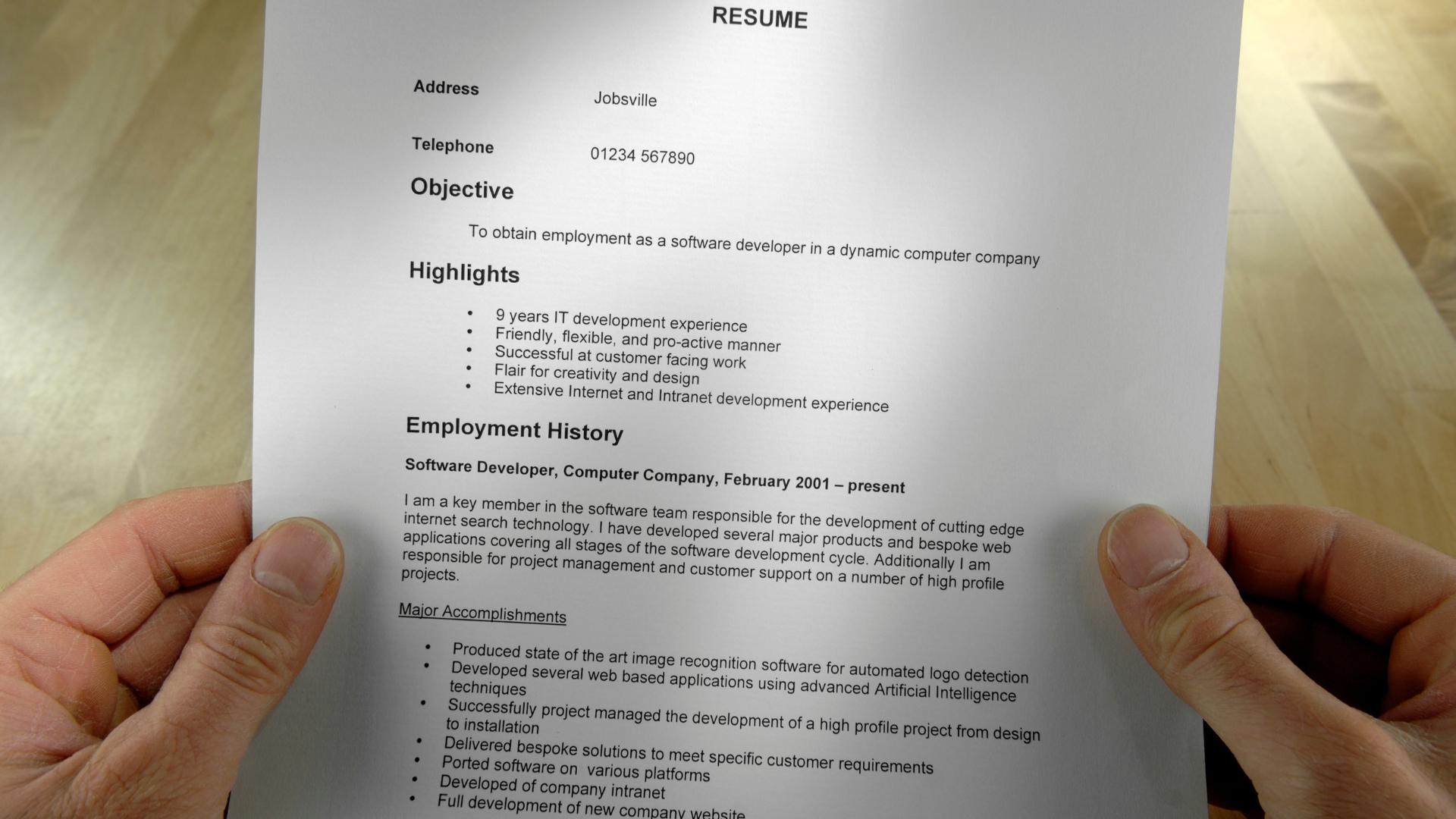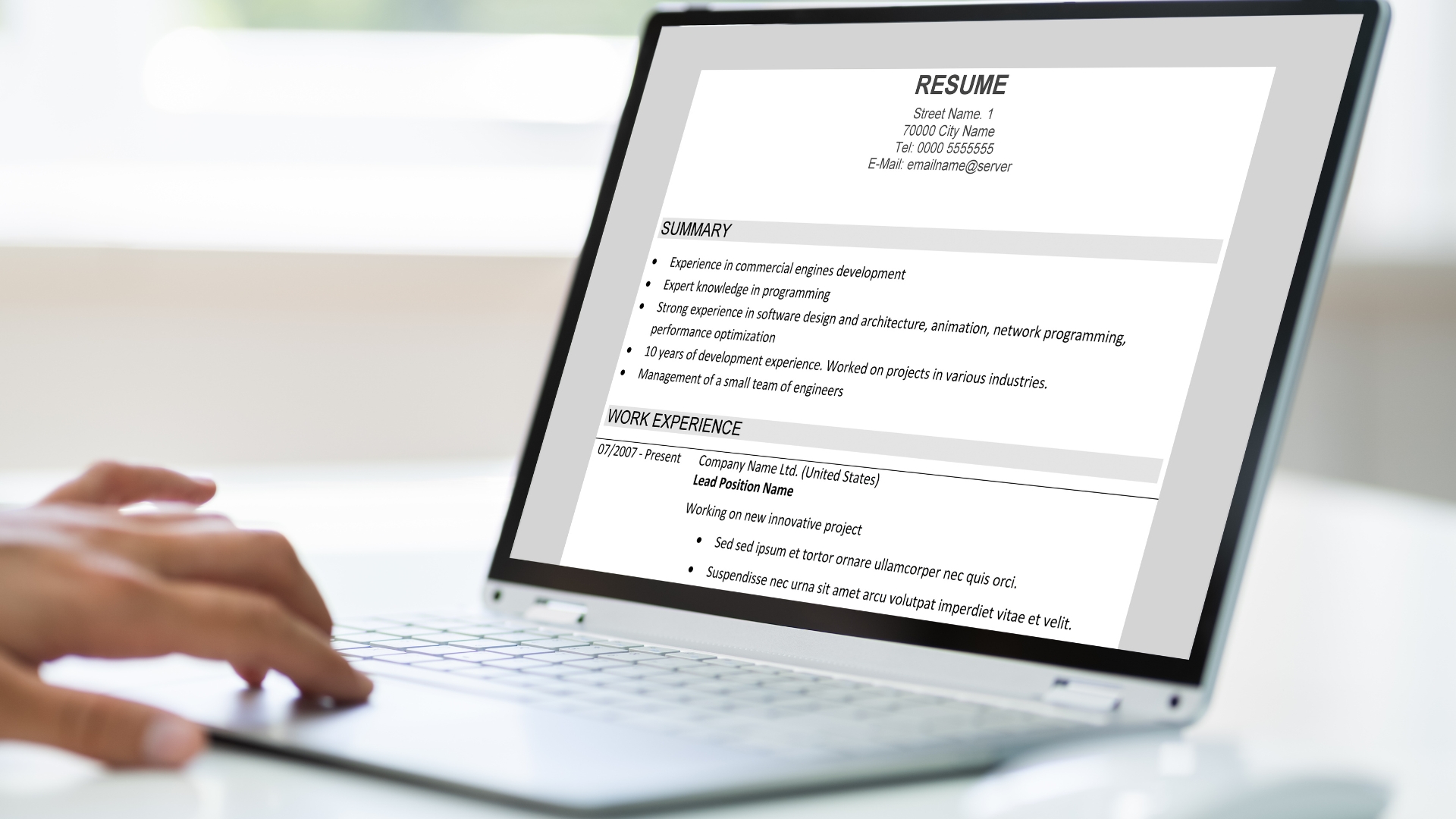Discover the true resume definition – learn its Components, types, purpose, and uses. Optimize yours today for job success! What is a resume? Uncover its meaning, types, and importance. Craft a winning one now and land your dream job!
Whether you are a recent graduate entering the job market for the first time or a seasoned professional looking to make a career change, this guide will help you navigate the resume-writing process with confidence.
This guide provides a definitive understanding of the resume definition and offers valuable insights on crafting a resume that stands out to employers.

Definition and Components of a Resume
Resume definition
A resume is a concise document that outlines an individual’s professional background, including their work experience, education, skills, and achievements. It serves as a summary of qualifications and is typically used when applying for jobs or seeking career opportunities.
A well-crafted resume can make a significant impact in the job market, highlighting the candidate’s suitability for a specific role. Remember, a good resume should be tailored to the job you’re applying for and showcase your most relevant qualifications.
A resume is a concise document that highlights your qualifications for a job, typically including your work experience, education, skills, and achievements. It's essentially a marketing tool you use to present yourself to potential employers.
Resume component
To create an impactful resume, it is important to understand the core components that employers look for. These elements should be strategically included to showcase your qualifications and make your resume stand out from the competition.
#1. Contact information
Start with your full name, professional title, phone number, and email address. You can also include relevant links to your LinkedIn profile or personal website.
#2. Summary statement or objective
This section provides a brief overview of your career goals and highlights your key qualifications. Tailor your summary to match the specific job you’re applying for.
#3. Education
List your academic achievements, including your degree, university name, graduation year, and any honours or relevant coursework.
#4. Work experience
Detail your professional experiences in reverse chronological order. Include the company name, position, dates of employment, and a bulleted list of your responsibilities and accomplishments.
#5. Skills
Highlight your relevant technical and transferable skills. Be sure to include both hard skills (e.g., programming languages) and soft skills (e.g., communication, leadership).
#6. Achievements and certifications
Showcase any special achievements, awards, or certifications that demonstrate your expertise in your field.
The main purpose of a resume is to get you an interview. It should be well-written, tailored to the specific job you're applying for, and easy for hiring managers to read and understand.
So, in summary, these are some key things to include in your resume:
- Your contact information: This includes your name, email address, phone number, and LinkedIn profile URL (if you have one).
- A summary or objective statement: This is a brief overview of your skills and experience, and it should be tailored to the specific job you’re applying for.
- Your work experience: List your jobs in reverse chronological order, starting with your most recent position. For each job, include the company name, your job title, your dates of employment, and a few bullet points describing your responsibilities and accomplishments.
- Your education: List your degrees in reverse chronological order, starting with your highest degree. For each degree, include the name of the institution, your graduation date, and your major.
- Your skills: List your relevant skills, both hard skills (technical skills) and soft skills (interpersonal skills).
- Your achievements: List any awards, honours, or other achievements that are relevant to the job you’re applying for.
Tips for writing a great resume
The crucial section of your resume that sets the tone for the rest of the document is professional summary.
This introductory paragraph provides employers with a snapshot of your qualifications, experience, and career goals. Here are some tips to help you craft a standout professional summary:
Keep it concise
Aim to write a summary that is about three to four sentences long. Make sure every word counts and avoid unnecessary fluff.
Highlight your key achievements
Use this section to showcase your most significant accomplishments that align with the job you’re applying for. Quantify your achievements whenever possible to provide a tangible impact.
Tailor it to the job
Customize your summary for each specific job you’re applying for. Highlight the skills and experience that are most relevant to the position and mention any industry-specific knowledge or certifications.
Focus on what you can offer
Instead of just listing your job titles and responsibilities, focus on the value you can bring to the organization. Highlight your unique skills, abilities, and strengths that make you stand out from other candidates.
Remember, your professional summary is the first impression employers have of you, so it's essential to make it compelling and engaging. Use these tips to make your professional summary shine and capture the attention of hiring managers.
Once you’ve written your resume, proofread it carefully for any errors. You can also ask a friend or family member to review it for you.
Again, I have written the above tips in summary. Here are tips for writing a great resume:
- Keep it concise: Your resume should be no more than one or two pages long.
- Use keywords: Use keywords from the job description throughout your resume. This will help your resume get past applicant tracking systems (ATS).
- Quantify your achievements: Whenever possible, quantify your achievements with numbers or percentages.
- Use strong action verbs: Use strong action verbs to describe your experience and skills.
- Proofread carefully: Make sure your resume is free of any errors in grammar or spelling.

What are the types of resume formats?
Choosing the right resume format can make a significant impact on how the hiring manager perceives your qualifications and experiences.
#1. Chronological Resume
This is the most common resume format, which lists your work experience in reverse chronological order. It emphasizes your career progression and puts your most recent achievements at the forefront.
#2. Functional Resume
This format highlights your skills and qualifications rather than focusing on your work history. It’s suitable for job seekers who are changing careers, have employment gaps, or have limited work experience.
#3. Combination Resume
As the name suggests, this format combines both chronological and functional resumes. It showcases your skills and qualifications while also providing a clear timeline of your work history.
Formatting and Presentation in a resume
While the content of your resume is undoubtedly important, it’s crucial not to overlook the significance of formatting and presentation.
A well-formatted and visually appealing resume has the power to catch the attention of hiring managers and make a positive impression.
When it comes to formatting, consistency is key. Use a clean and professional font, such as Arial or Times New Roman, and ensure that your font size is easy to read, typically between 10 and 12 points. Organize your sections with clear headings and use bullet points to make information easily scannable.
Additionally, pay attention to white space. Proper spacing between sections and within each section can make your resume look more aesthetically pleasing and less cluttered. Avoid cramming too much information onto one page; instead, use multiple pages if necessary.
The presentation also extends to the overall visual appeal of your resume. Consider using a professional template or design that aligns with your industry. Add a pop of colour or creative headers, but remember to keep it tasteful and professional.
Remember, a well-formatted and visually appealing resume can make a significant impact on the hiring manager’s perception of your professionalism and attention to detail. Take the time to ensure your resume looks polished and stands out from the crowd.
Making your resume visually appealing with design elements
A well-designed resume can catch the eye of hiring managers and make a lasting impression.
When it comes to design elements, simplicity is key. You want your resume to be clean, organized, and easy to read. Choose a professional font, such as Arial or Calibri, and stick to standard font sizes. Use bullet points to break up information and create a clear hierarchy.
Consider adding subtle design elements, such as a colored header or a line divider, to enhance the visual appeal of your resume. However, be cautious not to go overboard. v
Lastly, make sure your resume is formatted correctly for online applications and printing. Use PDF format to ensure that your resume remains consistent across different devices and operating systems.
By paying attention to the visual aspects of your resume, you can create a polished and professional document that stands out from the competition.
Succeeding in digital age: Optimizing your resume for ATS
In today’s job market, many companies are using Applicant Tracking Systems (ATS) to streamline the hiring process. These systems are designed to scan and analyze resumes based on certain keywords and criteria, making it crucial for job seekers to optimize their resumes accordingly.
- To ensure your resume gets past the ATS and into the hands of hiring managers, it’s important to tailor your content to match the job description. Carefully review the job posting and identify the keywords and skills that the employer is looking for. Incorporate these keywords strategically throughout your resume.
- Formatting is also important when it comes to ATS optimization. Stick to a simple and clean format, avoiding complex designs or graphics that may confuse the system. Use standard section headers and bullet points to break up information.
- Additionally, it’s a good idea to save your resume as a .docx or .txt file, as some ATS systems struggle with other file formats. Avoid using images or tables in your resume, as they may not be properly recognized by the system.
By optimizing your resume for ATS, you can increase your chances of getting noticed by employers and landing your dream job in the digital age.

Additional resources and tools for crafting the perfect resume
Crafting a perfect resume requires more than just understanding the basics. It’s important to stay updated with the latest trends and tools that can give your resume an edge. Here are a few additional resources and tools that can help you create a standout resume:
#1. Online Resume Builders
Websites like Canva, Zety, and Resume.io provide templates and designs that can make your resume visually appealing and professional. These tools allow you to customize your resume with ease, ensuring that it stands out among other applicants.
#2. Resume Writing Books
Consider investing in resume writing books such as “The Resume Design Book: How to Write a Resume in College & Influence Employers to Hire You” by Matthew T. Brink, or “Modernize Your Job Search Letters: Get Noticed… Get Hired” by Wendy S. Enelow and Louise Kursmark. These resources offer valuable advice and tips for crafting effective resumes.
#3. LinkedIn Profile Optimization
Your LinkedIn profile often serves as an extension of your resume. Optimize your LinkedIn profile by using keywords, showcasing your achievements, and engaging with relevant industry groups. This will not only increase your chances of being discovered by recruiters but also enhance your overall professional brand.
#4. Resume Writing Services
If you’re struggling to create a compelling resume, consider seeking professional help from resume writing services. These services provide personalized attention, ensuring that your resume stands out and effectively communicates your skills and experiences.
Remember, a well-crafted resume can significantly improve your chances of landing your dream job. Stay informed about the latest resume trends and leverage these additional resources and tools to create a resume that captures the attention of hiring managers and gets you one step closer to your career goals.
Crafting an effective resume is a skill that can greatly impact your career prospects. By understanding the basics and staying updated with the latest trends and tools, you can create a standout resume that captures the attention of hiring managers.
Learn More Job Interview Tips:
- The Ultimate Guide to Understanding the Cover Letter Definition
- How to Spot and Deal with Recruiters Lies in Job Interviews
- Federal Bank Interview Secrets: Unveiling the Keys to Success
- Things You Should Never Say in a Job Interview
- How to Write a Cover Letter and Pro Tips in 2024
- How to Answer for Tell Me About Yourself Question
Conclusion: Mastering the art of resume writing
Online resume builders like ResumeAiBuilder, BestAiResumebuilder, Canva, Zety, and Resume.io offer templates and designs that can make your resume visually appealing and professional.
Investing in resume writing books provides valuable advice and tips for crafting effective resumes. Optimizing your LinkedIn profile can improve your professional brand and increase your chances of being discovered by recruiters.
Remember, mastering the art of resume writing takes time and practice. Stay informed about the latest resume trends and leverage the additional resources and tools mentioned in this guide. With dedication and effort, you can create a resume that sets you apart from other applicants and takes you one step closer to your career goals.
I don’t think the title of your article matches the content lol. Just kidding, mainly because I had some doubts after reading the article.
Thank you for your comment, binance code. I apologize if the title of the article caused any confusion. The purpose of the article was to provide a comprehensive understanding of resumes, including their meaning, purpose, types, and uses. If you have any specific doubts or questions after reading the article, I would be more than happy to address them and provide further clarification.
I’ll right away clutch your rss as I can not find
your email subscription hyperlink or newsletter service.
Do you have any? Kindly permit me know in order that I could subscribe.
Thanks.
Thank you for your interest in subscribing to our content, Toby Davis. We appreciate your enthusiasm. At the moment, we do not have an email subscription or newsletter service available. However, we continuously strive to improve our platform and provide valuable resources to our users. Rest assured, if we do introduce such a service in the future, we will make sure to update our users and provide them with the necessary information. We appreciate your support and hope you continue to find our content helpful.
https://aiinterviewanswersgenerator.com/feed